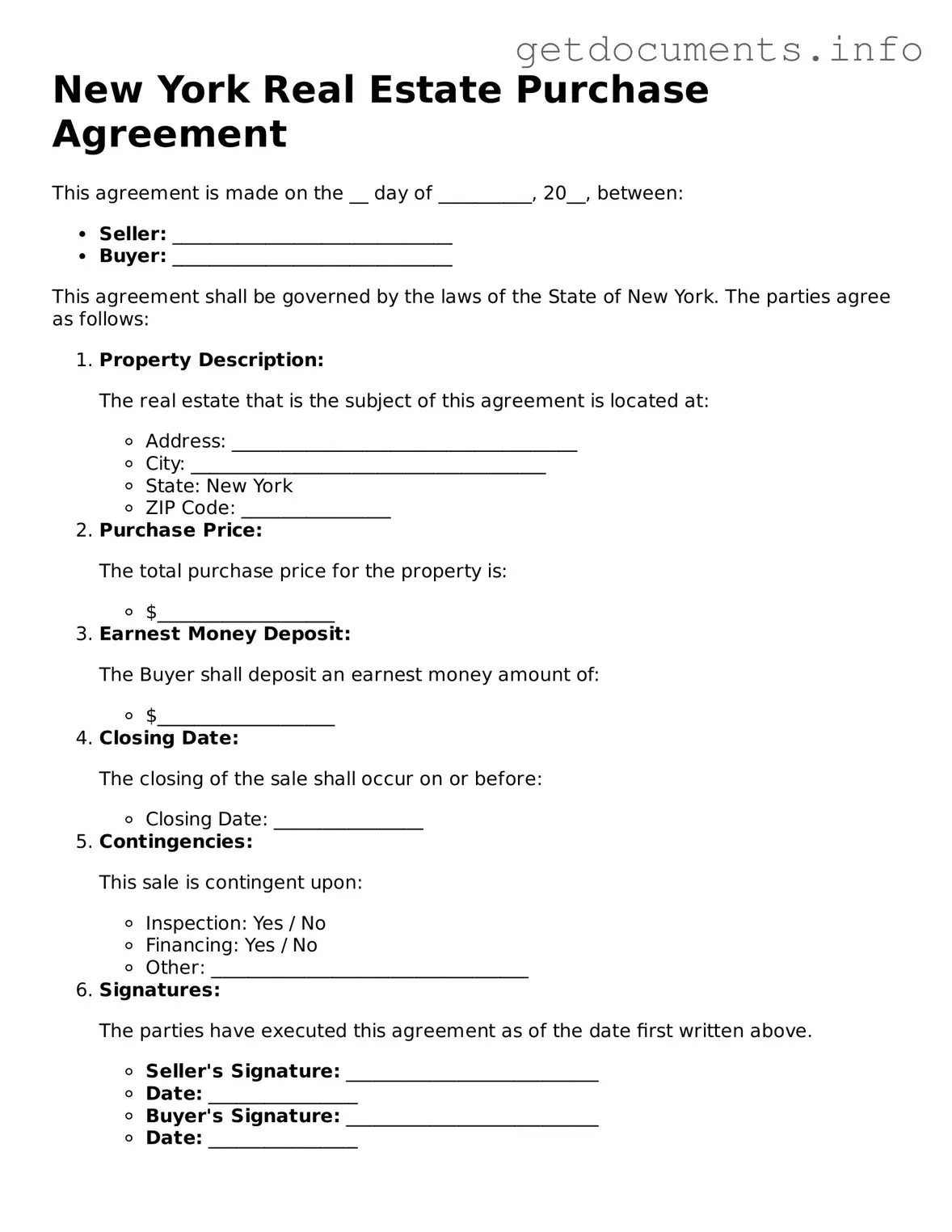Free Real Estate Purchase Agreement Template for New York
The New York Real Estate Purchase Agreement form is a legally binding document that outlines the terms and conditions under which a buyer agrees to purchase property from a seller. This agreement serves to protect both parties by detailing essential aspects such as purchase price, contingencies, and closing dates. Understanding this form is crucial for anyone involved in real estate transactions in New York.
Ready to get started? Fill out the form by clicking the button below.
Access Real Estate Purchase Agreement Editor
